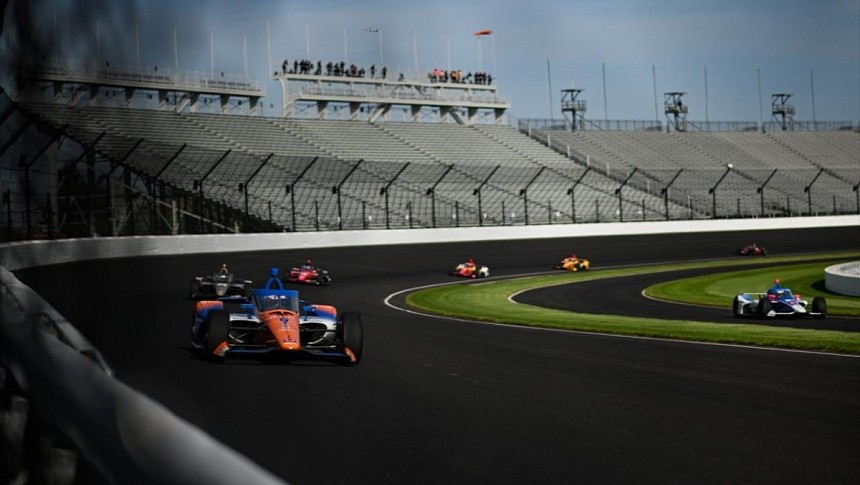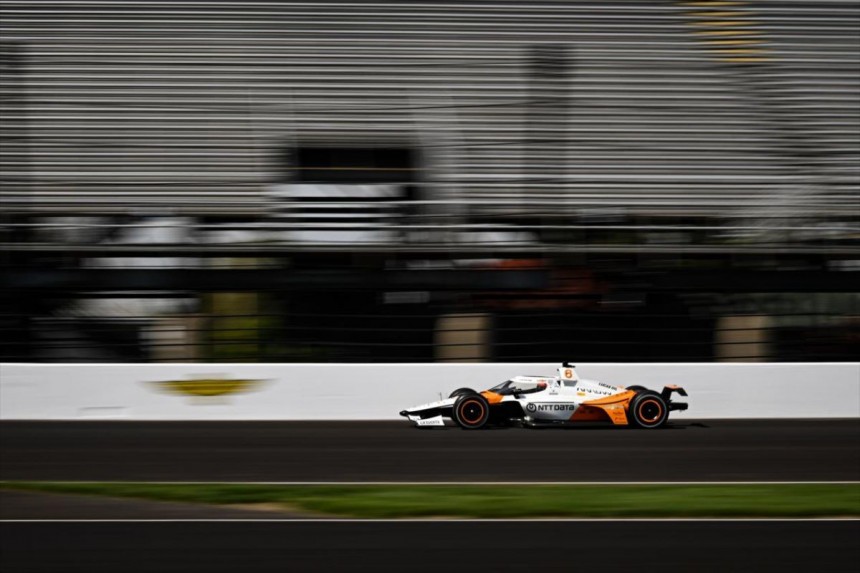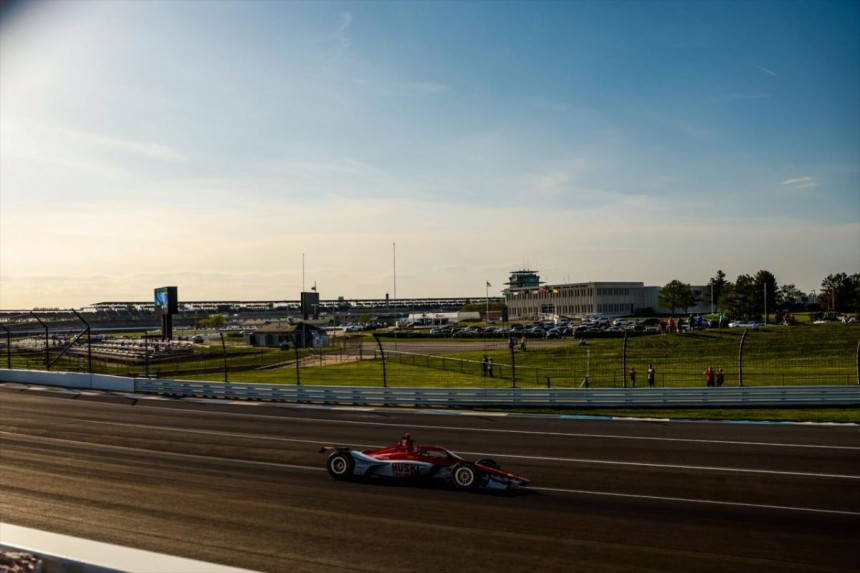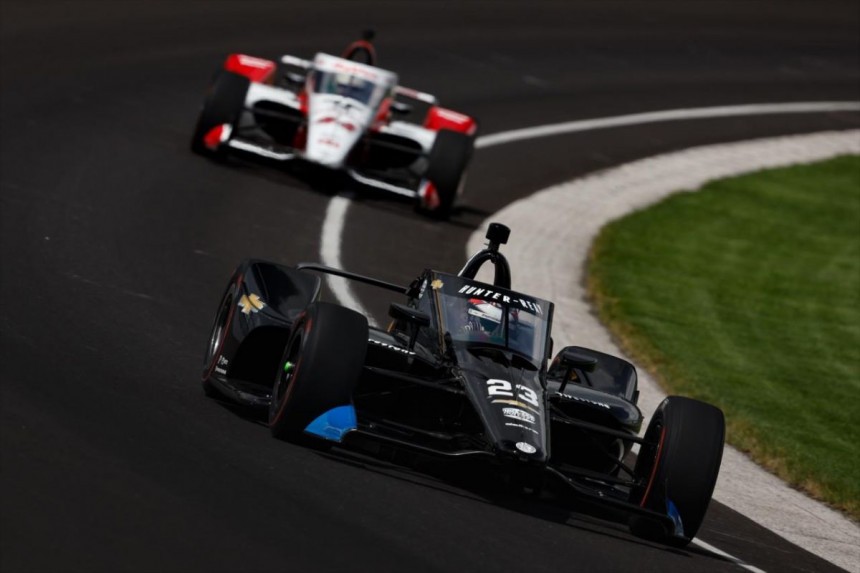The Indianapolis 500, a fascinating aspect of the NTT IndyCar Series, is unlike any other race weekend. While 16 of the 17 race weekends feature only a race, the Indy 500 boasts a whole week of activity in May, including a qualifying weekend and two more practice sessions on race week. Recently, there has even been a two-day open test in April.
Most teams treat this week's two-day test session as a glorified practice day, aiming to get a leg up on the competition and shake down the car before May. The ultimate flex was when Roger Penske purchased the Speedway in 2019, earning him the coveted parking space outside the media center in the shadows of the pagoda. While everyone else's area is known through initials, Penske's reads "18," which stands for his 18 Indy 500 victories.
Despite winning two straight Indy 500s, Penske has surprisingly not been close in the last three years, including a winless Month of May at the Indianapolis Motor Speedway. Last year, Team Penske, who had won each of the first three races of the 2022 season and were the team everyone was talking about winning the Indy 500, failed to lead a single lap. The two-hour veteran-only session at the test session went smoothly, with the top speed of 224.330 mph being set by defending Indy 500 champion Marcus Ericsson. Ganassi, who has won five Indy 500s in their history, led 54% of the overall laps in the Aeroscreen era, making them a favorite to win again this year.
The session came to an early end, but it fulfilled its purpose. Eight of the 33 cars present had to undergo orientation or refresher courses. Among those, five were veterans who only needed to complete the last two phases, and they managed to do so even with the light rain. As for the rookies, two out of the three finished all three phases, leaving only Agustin Canapino with one phase left. However, he can still practice as he completed the first two phases and only needs to complete laps at speeds over 215 mph in the final phase.
The phases the drivers had to go through involved completing a certain number of laps at different speeds, ranging from 205-210 mph to over 215 mph in the final stage. Marco Andretti topped the speed chart in this session with a speed of 221.569 mph. Josef Newgarden, who was the quickest in the 2021 and 2022 available tests, continued his form by clocking in at 227.686 mph, the fastest among the 33 cars.
Newgarden attributed their success to the team's efficiency and the learnings they gained during the session. He felt confident that the offseason adjustments to their Indy package would make them competitive in the upcoming 107th edition of the Indy 500. Conor Daly and Scott Dixon followed Newgarden on the speed chart, with Kyle Kirkwood and Takuma Sato rounding out the top five of the busy day of action.
My attention will be focused on the speed charts' lower half for the upcoming days, as they could reveal which teams are sweating about the qualifying weekend. While it's not common to focus on slower speeds, it's where the clues may lie. The two cars that missed the 2021 race were the only ones that didn't test here last year. Five of the bottom eight drivers on the 2021 available test speed chart started 25th or worse.
On the second day of testing last year, five out of the bottom six drivers started 25th or worse, with four of them taking spots in the last two rows. Stefan Wilson was the only driver who didn't test, and he started last. During Thursday's testing, all three rookie drivers found themselves in the bottom seven of the speed charts. Agustin Canapino (222.162 mph) was 27th, Sting Ray Robb (221.785 mph) was 29th, and Benjamin Pedersen (220.109 mph) came in last at 33rd.
I am curious to see who is struggling for speed on Thursday and Friday, as it's an indication of who may struggle in the future. Jay Frye and his team have done a great job making this racing package perfect, knowing that passing shouldn't be easy. With the UAK, passing was almost too complicated. But with the best drivers in the world, it's hard to pass a car of equal talent going at a similar speed.
In 2018, the first year of the UAK, the lead change dropped to under 30. The following year it went down to 29. It decreased to 21 lead changes in 2020 after the Aeroscreen was added. However, 2021 and the previous year saw 36 and 38 lead changes, respectively, with an even better show than before. The addition of more downforce on the cars in Texas saw 26 lead changes, the most in two decades.
With more downforce added for Indy, the drivers mentioned that they could follow more closely behind other cars. Although they might hit a wall of air when trying to pass, it's natural since the headwind slows the vehicle in front down.
These cars need an extra dose of horsepower to make that pass and nail the timing. But hey, there's good news: you can now follow closer than ever before, and that's a considerable boost. From what's on offer, I reckon the cars will carry more weight this year, and that ought to bunch things up nicely.
That's the theory, at least. Don't expect the Texas treatment, though. This isn't some narrow track with two lanes. Save for the starts and restarts, there won't be constant side-by-side racing. Instead, you'll see some heart-pumping launches, and then it'll be about dealing with traffic.
According to Josef Newgarden, the goal is to give more front-runners a chance to mix things up. Usually, it's only the top two swapping places, but he wants to see three or four contenders shuffling around. Heck, even mid-pack drivers should have more opportunities to make moves. Getting that balance right is tough, but INDYCAR's tests have been promising. The start of the race will always involve fuel-saving, but the end will be a nail-biter – much like what we saw in Texas. With how things are shaping up, the 2023 race promises to be even better.
Despite winning two straight Indy 500s, Penske has surprisingly not been close in the last three years, including a winless Month of May at the Indianapolis Motor Speedway. Last year, Team Penske, who had won each of the first three races of the 2022 season and were the team everyone was talking about winning the Indy 500, failed to lead a single lap. The two-hour veteran-only session at the test session went smoothly, with the top speed of 224.330 mph being set by defending Indy 500 champion Marcus Ericsson. Ganassi, who has won five Indy 500s in their history, led 54% of the overall laps in the Aeroscreen era, making them a favorite to win again this year.
The session came to an early end, but it fulfilled its purpose. Eight of the 33 cars present had to undergo orientation or refresher courses. Among those, five were veterans who only needed to complete the last two phases, and they managed to do so even with the light rain. As for the rookies, two out of the three finished all three phases, leaving only Agustin Canapino with one phase left. However, he can still practice as he completed the first two phases and only needs to complete laps at speeds over 215 mph in the final phase.
The phases the drivers had to go through involved completing a certain number of laps at different speeds, ranging from 205-210 mph to over 215 mph in the final stage. Marco Andretti topped the speed chart in this session with a speed of 221.569 mph. Josef Newgarden, who was the quickest in the 2021 and 2022 available tests, continued his form by clocking in at 227.686 mph, the fastest among the 33 cars.
My attention will be focused on the speed charts' lower half for the upcoming days, as they could reveal which teams are sweating about the qualifying weekend. While it's not common to focus on slower speeds, it's where the clues may lie. The two cars that missed the 2021 race were the only ones that didn't test here last year. Five of the bottom eight drivers on the 2021 available test speed chart started 25th or worse.
On the second day of testing last year, five out of the bottom six drivers started 25th or worse, with four of them taking spots in the last two rows. Stefan Wilson was the only driver who didn't test, and he started last. During Thursday's testing, all three rookie drivers found themselves in the bottom seven of the speed charts. Agustin Canapino (222.162 mph) was 27th, Sting Ray Robb (221.785 mph) was 29th, and Benjamin Pedersen (220.109 mph) came in last at 33rd.
I am curious to see who is struggling for speed on Thursday and Friday, as it's an indication of who may struggle in the future. Jay Frye and his team have done a great job making this racing package perfect, knowing that passing shouldn't be easy. With the UAK, passing was almost too complicated. But with the best drivers in the world, it's hard to pass a car of equal talent going at a similar speed.
With more downforce added for Indy, the drivers mentioned that they could follow more closely behind other cars. Although they might hit a wall of air when trying to pass, it's natural since the headwind slows the vehicle in front down.
These cars need an extra dose of horsepower to make that pass and nail the timing. But hey, there's good news: you can now follow closer than ever before, and that's a considerable boost. From what's on offer, I reckon the cars will carry more weight this year, and that ought to bunch things up nicely.
That's the theory, at least. Don't expect the Texas treatment, though. This isn't some narrow track with two lanes. Save for the starts and restarts, there won't be constant side-by-side racing. Instead, you'll see some heart-pumping launches, and then it'll be about dealing with traffic.













